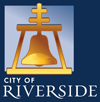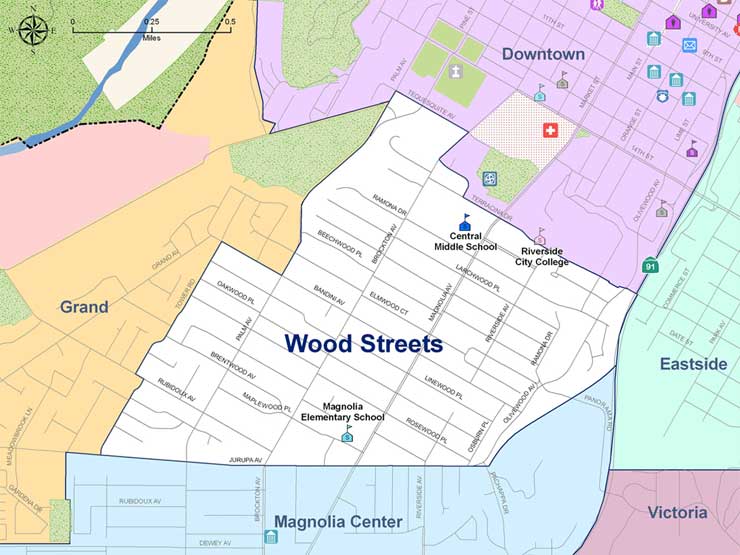This neighborhood was devoted to orange groves until 1913 when fill was introduced to the Tequesquite Arroyo, allowing Magnolia Avenue to connect with Downtown. Proximity and easy access to the Downtown area made this area more desirable for residential subdivision. A subdivider named Wood used his name as suffix to a street name, and so began a series.
Wood Streets offers perhaps the most cohesive neighborhood design to be found in the City of Riverside. Street and neighborhood designs reflect a very traditional aesthetic.
The rigid grid layout of the community streets, coupled with their narrow width and beautiful landscaping, perpetuate a 1920’s neighborhood character. The homes of this neighborhood reflect the designs of the early part of this century and nearly all the homes were built prior to World War Two. A tour of this area can quickly demonstrate the remarkable variety, and beauty, of architectural styles in use at that time.
The region is almost completely devoted to low-density residential uses, and what commercial centers there are fall in the northwest section. Two small section of high-density residential can be found in the east and western corners and office uses can be found in the south.
This neighborhood sits partially on naturally flat landscape and partially upon a manufactured land area. The man-made land bridge that connects this neighborhood with Downtown rises dramatically over, and provides an excellent view of, the Tequesquite Arroyo. This arroyo dominates the northern-most boundary of the Wood Streets and provides a unique open space area for recreation and natural beauty.
This region has a strong sense of community and a tradition of home ownership. This tradition has remained strong and most of the homes in this area are owned rather than rented.


